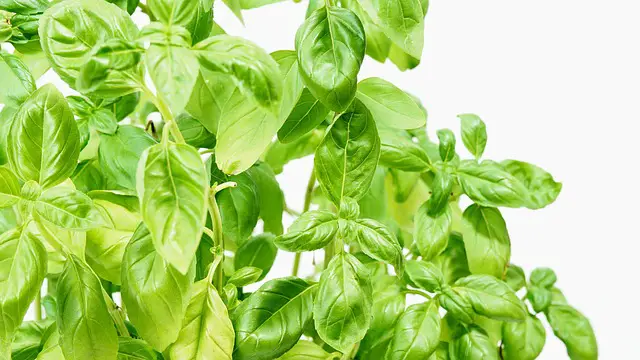Basil plants are a popular herb in many households, known for their fresh aroma and versatility in cooking. However, it can be frustrating when your basil plant keep dying. There are several reasons why your basil plant might not be thriving, and it’s important to identify the cause to revive it successfully.
Understanding basil plants is crucial to maintaining their health. Basil plants are annuals, meaning they complete their life cycle in one growing season. They require adequate sunlight, water, and nutrients to grow properly. Common diseases and pests affecting basil include fungal infections, aphids, and spider mites.
Watering your basil plant correctly is essential to its health. Overwatering can lead to root rot, while underwatering can cause the plant to wilt and die. Proper lighting is also important, as basil plants require at least six hours of sunlight per day.
Temperature can also affect basil plants, as they prefer warm temperatures between 70-80°F. Choosing the right soil and pot, as well as pruning and flowering, are additional factors that can impact the health of your basil plant.
Key Takeaways
- Understanding the needs of basil plants is crucial to maintaining their health
- Proper watering, lighting, and temperature are important factors to consider
- Choosing the right soil and pot, as well as pruning and flowering, can also impact the health of your basil plant.
Check out these other top posts:
- What is Potassium Used for in Plants?
- What is Growing Out of My Palm Plant?
- What is Eating My Lambs Ear Plant?
Understanding Basil Plants
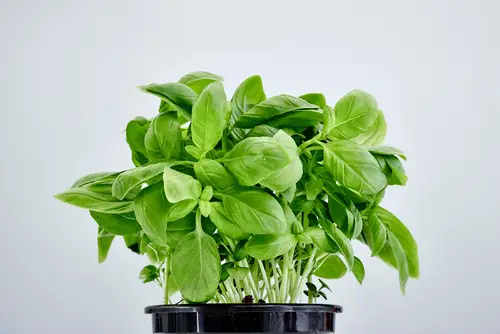
Basil is a popular herb that is used in a variety of culinary dishes. It is an annual plant that typically grows to be around 12-24 inches tall. Basil plants have green leaves that are fragrant and slightly fuzzy to the touch. The leaves are typically 2-3 inches long and 1-2 inches wide.
Basil plants are typically easy to grow and care for, but they can be susceptible to a variety of problems that can cause them to wilt or die. Understanding the needs of basil plants is essential for keeping them healthy and thriving.
One of the most important things to keep in mind when growing basil plants is that they are annuals. This means that they typically only last for one growing season.
After that, they will begin to die back and eventually die off completely. It is important to keep this in mind when planning your garden and deciding where to plant your basil.
Basil plants also require a lot of sunlight in order to grow properly. They should be planted in a location that receives at least 6-8 hours of direct sunlight each day. If basil plants do not receive enough sunlight, they may become leggy and weak, which can make them more susceptible to disease and pests.
Another important factor to consider when growing basil plants is the soil they are planted in. Basil plants prefer well-draining soil that is rich in organic matter. They do not like soil that is too wet or too dry, so it is important to keep the soil consistently moist but not waterlogged.
By understanding the needs of basil plants and providing them with the right growing conditions, it is possible to keep them healthy and thriving throughout the growing season.
Common Diseases and Pests Affecting Basil
Basil plants are susceptible to several diseases and pests that can cause them to wither and die. Knowing how to identify and manage these problems can help you keep your basil plants healthy and productive.
1. Identifying Fusarium Wilt
Fusarium wilt is a fungal disease that attacks the vascular system of basil plants, causing them to wilt and die. Symptoms of fusarium wilt include yellowing and wilting of the leaves, stunted growth, and brown discoloration of the stem. The fungus can survive in the soil for several years, making it difficult to control.
To prevent fusarium wilt, avoid planting basil in soil that has previously grown infected plants. If you suspect your plants have fusarium wilt, remove and destroy them immediately to prevent the fungus from spreading.
2. Dealing with Root Rot
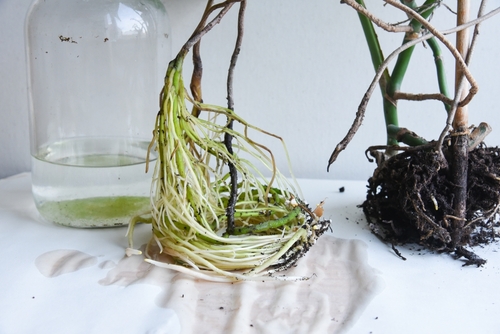
Root rot is a fungal disease that affects the roots of basil plants, causing them to rot and die. Symptoms of root rot include yellowing and wilting of the leaves, stunted growth, and a foul odor coming from the soil.
To prevent root rot, make sure your basil plants are not overwatered and that the soil has good drainage. If your plants have root rot, remove and destroy them immediately to prevent the fungus from spreading.
3. Managing Downy Mildew
Downy mildew is a fungal disease that affects the leaves of basil plants, causing them to turn yellow and brown and eventually die. Symptoms of downy mildew include yellowing and curling of the leaves, as well as the presence of a white or grayish mold on the undersides of the leaves.
To prevent downy mildew, avoid overhead watering and make sure your basil plants have good air circulation. If your plants have downy mildew, remove and destroy the infected leaves immediately to prevent the fungus from spreading.
4. Combatting Leaf Spot
Leaf spot is a bacterial disease that affects the leaves of basil plants, causing them to develop brown spots and eventually die. Symptoms of leaf spot include brown or black spots on the leaves, as well as yellowing and wilting of the leaves.
To prevent leaf spot, make sure your basil plants are not overcrowded and that the soil is well-draining. If your plants have leaf spot, remove and destroy the infected leaves immediately to prevent the bacteria from spreading.
5. Handling Aphids and Spider Mites
Aphids and spider mites are common pests that can attack basil plants, sucking the sap from the leaves and causing them to wilt and die. Symptoms of aphids and spider mites include the presence of small, soft-bodied insects on the leaves, as well as the presence of a sticky substance on the leaves.
To prevent aphids and spider mites, keep your basil plants well-watered and fertilized, and remove any weeds or other debris from around the plants. If your plants have aphids or spider mites, you can use insecticidal soap or neem oil to control the infestation.
Watering Your Basil Plant
Basil plants need consistent access to water to thrive, but overwatering or underwatering can lead to the death of the plant. In this section, we will discuss how to properly water your basil plant to ensure its health.
Avoiding Overwatering

Overwatering is a common mistake that many people make when caring for their basil plants. When the soil is constantly moist, the roots can become waterlogged and begin to rot. Signs of overwatering include yellowing leaves, wilting, and a foul odor coming from the soil.
To avoid overwatering your basil plant, make sure to use well-draining soil that allows excess water to escape. Water your plant only when the top inch of soil is dry to the touch. When watering, make sure to saturate the soil evenly without letting water pool on the surface.
Preventing Underwatering
Underwatering can also cause your basil plant to die. When the soil is too dry, the roots cannot absorb the necessary nutrients and the plant will begin to wilt and eventually die. Signs of underwatering include drooping leaves, dry soil, and brown spots on the leaves.
To prevent underwatering, make sure to water your basil plant regularly. Check the soil frequently and water when the top inch is dry. During hot weather, you may need to water more frequently to prevent the soil from drying out too quickly.
Importance of Proper Lighting
Proper lighting is essential for the growth and survival of basil plants. The right amount of light can help basil plants thrive, while inadequate lighting can cause them to wither and die. In this section, we will discuss the importance of proper lighting for basil plants and how to provide them with the right amount of light.
Role of Direct Sunlight
Basil plants require direct sunlight for at least six hours a day. Direct sunlight provides the plants with the necessary energy to grow and produce leaves. Without enough direct sunlight, basil plants may become weak and spindly, and their leaves may turn yellow or fall off.
However, too much direct sunlight can also be harmful to basil plants. If the plants are exposed to intense sunlight for extended periods, they may become stressed and wilt. Therefore, it’s essential to provide basil plants with the right amount of direct sunlight.
Using Grow Lights
Grow lights are an excellent alternative to natural sunlight for basil plants. They provide the plants with the necessary light spectrum for growth and development. LED grow lights are the most popular type of grow light for indoor basil plants.
When using grow lights, it’s essential to ensure that they are positioned at the right distance from the plants. The distance between the grow light and the plants should be about 6-12 inches. If the grow light is too close, it may burn the plants, while if it’s too far, the plants may not receive enough light.
In addition to grow lights, it’s also important to consider the lighting conditions in the room where the basil plant is located. Basil plants require bright, indirect light, so it’s best to keep them near a window that receives plenty of natural light.
If the room is too dark, consider adding additional lighting to provide the plants with the necessary light.
Temperature and Basil Plants

Temperature is an essential factor in the growth and survival of basil plants. Basil plants thrive in warm temperatures and cannot tolerate frost or cold temperatures.
During the summer, basil plants grow best in temperatures between 70°F and 80°F. In contrast, temperatures below 50°F can cause basil plants to wilt quickly and eventually die. Therefore, it’s crucial to avoid exposing basil plants to low temperatures.
One common mistake that gardeners make is leaving their basil plants outside overnight during the early fall or late spring. These are the times when the temperature can drop unexpectedly, and it can cause severe damage to basil plants.
If the temperature does drop below 50°F, gardeners can take steps to protect their basil plants. They can use a frost blanket or cover to protect the plants from the cold. Additionally, they can move the plants to a warmer location, such as indoors or in a greenhouse.
Choosing the Right Soil and Pot
Understanding Soil PH
The first thing to consider when choosing soil for your basil plant is the pH level. Basil plants prefer soil with a pH level between 6.0 and 7.5. If the soil is too acidic, the plant may become stunted and have difficulty absorbing nutrients.
Conversely, if the soil is too alkaline, the plant may develop yellow leaves and be susceptible to disease.
To ensure that the soil is at the right pH level, it’s a good idea to test the soil before planting. Soil testing kits are readily available at most garden centers and can help you determine the pH level of your soil. If the soil is too acidic, you can add lime to raise the pH level. If the soil is too alkaline, you can add sulfur to lower the pH level.
Selecting the Right Pot
Choosing the right pot is also important for the health of your basil plant. The pot should be large enough to accommodate the plant’s root system and provide adequate drainage. If the pot is too small, the plant may become root-bound and have difficulty absorbing water and nutrients.
When selecting a pot, consider the material it’s made of. Ceramic pots are a popular choice because they are durable and come in a variety of colors and designs. However, they can be heavy and may not provide adequate drainage. Plastic pots are lightweight and inexpensive, but they may not be as durable as ceramic pots.
It’s also important to choose a pot with drainage holes to prevent water from pooling at the bottom of the pot. If the pot does not have drainage holes, you can create them using a drill or hammer and nail.
Nutrient Needs of Basil

Basil plants require a variety of nutrients to thrive, including nitrogen, iron, and other essential minerals. A lack of these nutrients can cause the plant to wilt and eventually die.
Role of Nitrogen
Nitrogen is one of the most important nutrients for basil plants. It is essential for the plant’s growth and development, as it plays a critical role in the production of chlorophyll, which allows the plant to carry out photosynthesis. Nitrogen is also necessary for the production of amino acids, which are the building blocks of proteins.
A lack of nitrogen can cause the leaves of the basil plant to turn yellow and stunt its growth. To ensure that the plant is getting enough nitrogen, it is important to use a fertilizer that is high in nitrogen. Organic fertilizers, such as compost or fish emulsion, are excellent sources of nitrogen.
Importance of Iron
Iron is another essential nutrient for basil plants. It is necessary for the production of chlorophyll and is also involved in the plant’s energy production. A lack of iron can cause the leaves of the basil plant to turn yellow, a condition known as chlorosis.
To ensure that the plant is getting enough iron, it is important to use a fertilizer that is high in iron. Iron chelate is a common form of iron fertilizer that can be added to the soil to correct a deficiency.
In addition to nitrogen and iron, basil plants also require other essential minerals, such as potassium, phosphorus, and calcium. Ensuring that the plant is getting all of the necessary nutrients will help it to grow strong and healthy, and prevent it from wilting or dying prematurely due to a lack of nutrients.
Pruning and Flowering in Basil Plants
Basil plants are known for their fragrant leaves that add flavor to various dishes. However, they can be quite sensitive and prone to dying if not cared for properly. One of the reasons why basil plants die is due to improper pruning and flowering.
When basil plants start to flower, they focus their energy on producing seeds instead of growing new leaves. As a result, the leaves become smaller, and the plant may eventually die. To prevent this, it is essential to prune the basil plant regularly.
Pruning is the process of removing the top part of the plant, including the flowers, to encourage new growth. It is recommended to prune the basil plant when it reaches about 6 inches (15 cm) in height or has at least 6 sets of leaves. This will ensure that the plant has enough leaves to continue growing after pruning.
When pruning, make sure to cut the stem just above a set of leaves. This will encourage the plant to grow new branches from that point, resulting in a bushier plant. It is also important to remove any dead or yellowing leaves as they can attract pests and diseases.
Another benefit of pruning basil plants is that it can prevent them from going to seed. When basil plants go to seed, they produce basil seeds, which can be used for planting but also signal the end of the plant’s life cycle. By pruning the plant regularly, you can prevent it from going to seed and prolong its life.
Other Factors Affecting Basil Health
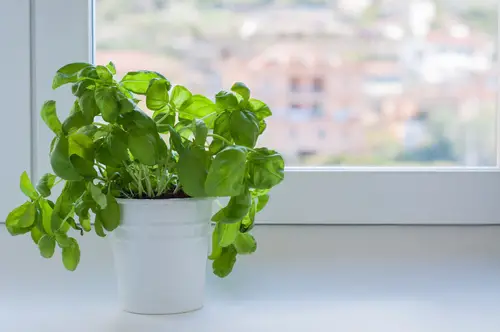
1. Effects of Wind
Strong winds can be detrimental to the health of basil plants. The wind can cause physical damage to the leaves and stems, and also cause the soil to dry out quickly. When the soil dries out, the basil plant may wilt and eventually die.
To prevent this, it is important to protect the basil plant from strong winds by placing it in a sheltered location or using a windbreak.
2. Understanding Stress Factors
Basil plants may also experience stress due to various factors such as drought, overwatering, and temperature fluctuations. When basil plants are stressed, they may become more susceptible to diseases and pests.
To prevent stress, it is important to maintain consistent watering schedules, provide adequate nutrients, and avoid exposing the plant to extreme temperatures.
3. Dealing with Insufficient Light
Basil plants require adequate light to grow and thrive. Insufficient light can cause the plant to become leggy and weak, and may also reduce the flavor and aroma of the leaves.
To ensure that the basil plant receives enough light, it should be placed in a location that receives at least 6 hours of direct sunlight per day. If this is not possible, grow lights may be used to supplement natural light.
Reviving a Dying Basil Plant
Basil is a popular herb known for its fresh aroma and taste. However, it can be frustrating when your basil plant starts to wither and die. Fortunately, with the right care, you can revive a dying basil plant.
1. Addressing Yellow Leaves
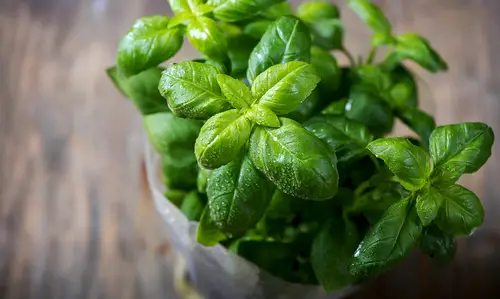
Yellow leaves are a common sign of stress in basil plants. If your basil plant has yellow leaves, it may be due to overwatering or underwatering. Check the soil moisture level and adjust watering accordingly. If the soil is too dry, water the plant thoroughly. If the soil is too wet, let it dry out before watering again.
Another common cause of yellow leaves is nutrient deficiency. Basil plants need nutrients such as nitrogen, phosphorus, and potassium to grow properly. If the soil lacks these nutrients, the leaves may turn yellow. To address this, add a balanced fertilizer to the soil.
2. Managing Brown Leaves
Brown leaves are another sign of stress in basil plants. If your basil plant has brown leaves, it may be due to too much direct sunlight or extreme temperatures. Move the plant to a location with indirect sunlight and a stable temperature.
Brown leaves can also be caused by fungal diseases such as basil blight. To manage this, remove any infected leaves and treat the plant with a fungicide.
3. Dealing with Wilting Leaves
Wilting leaves are a sign that your basil plant is not getting enough water. If the soil is dry, water the plant thoroughly. If the soil is wet, let it dry out before watering again.
Too much heat or direct sunlight can also cause wilting. Move the plant to a cooler location with indirect sunlight.
Leaf drop can also be a sign of stress in basil plants. If your basil plant is dropping leaves, it may be due to overwatering, underwatering, or extreme temperatures. Check the soil moisture level and adjust watering accordingly. Move the plant to a more suitable location with indirect sunlight and a stable temperature.
By addressing the underlying causes of yellow leaves, brown leaves, wilting leaves, and leaf drop, you can revive a dying basil plant and enjoy fresh basil for your recipes.
Conclusion
There are many reasons why a basil plant may be dying. It could be due to overwatering, underwatering, a pot that is too small, high temperatures, too much sun, too much wind, or exposure to cold temperatures. Pests and diseases can also cause a basil plant to wilt or die.
To prevent a basil plant from dying, it is important to provide it with the right growing conditions. This includes proper watering, adequate sunlight, and a suitable pot size. Basil plants prefer well-draining soil that is kept consistently moist but not waterlogged. They also need at least six hours of direct sunlight each day.
If a basil plant is already showing signs of distress, there are steps that can be taken to revive it. These include adjusting the watering schedule, repotting into a larger container, and pruning away any damaged or diseased leaves.
In some cases, it may be necessary to treat the plant with an insecticide or fungicide to combat pests or diseases.
Frequently Asked Questions
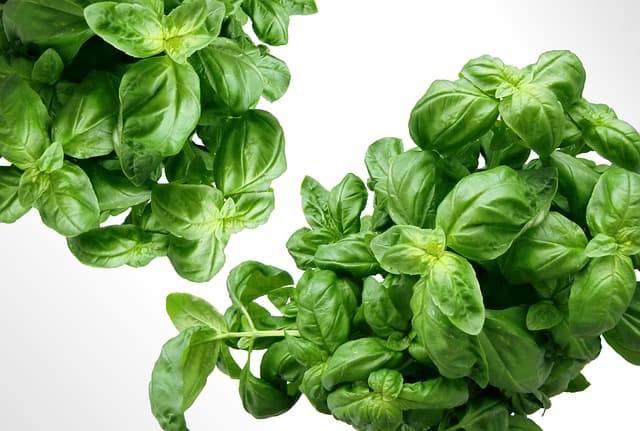
How can I prevent my basil plant from wilting and turning brown?
To prevent your basil plant from wilting and turning brown, make sure to give it adequate sunlight and water. Basil plants require at least six hours of sunlight per day, so make sure to place it in a sunny spot.
Additionally, be careful not to overwater or underwater your basil plant, as both can cause stress to the plant.
What are some signs of overwatering or underwatering a basil plant?
Signs of overwatering in a basil plant include yellowing leaves, wilting, and a foul smell. On the other hand, signs of underwatering include dry, crunchy leaves and a droopy appearance.
What are some common reasons for a basil plant to die?
Common reasons for a basil plant to die include overwatering, underwatering, disease, pests, and extreme temperatures.
To avoid these issues, make sure to water your basil plant appropriately, keep an eye out for any signs of disease or pests, and avoid exposing it to extreme temperatures.
How often should I water my basil plant?
Basil plants require consistent moisture, but it’s important not to overwater them. A good rule of thumb is to water your basil plant once a week, or more frequently if the soil feels dry to the touch. Be sure to water the soil directly and avoid getting the leaves wet, as this can lead to disease.
What are some tips for keeping a basil plant alive during the winter?
Basil plants are sensitive to cold temperatures and typically don’t survive the winter outdoors. To keep your basil plant alive during the winter, consider bringing it indoors and placing it in a sunny spot with adequate humidity.
You can also cut back on watering and fertilizing during the winter months.
What are some natural remedies for reviving a dying basil plant?
If your basil plant is dying, there are a few natural remedies you can try to revive it. One option is to prune the plant back to encourage new growth. You can also try repotting the plant with fresh soil and adjusting its watering schedule.
Additionally, some gardeners recommend using organic fertilizers or natural pest control methods to help revive a dying basil plant.

Hey, I’m Lisa and I’ve been an avid gardener for over 30 years. I love writing, talking and living in the garden! Feel free to connect with me on my socials below

